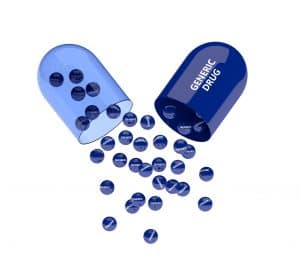What Is a Drug Formulary? Types, Examples, Cost of Prescriptions
Posted by Prescription Hope - See Editorial Guidelines (Last Updated On: Tue Mar 14 2023)
You might have heard the phrase drug formulary or formulary drug, perhaps through your insurer, but we’re going to outline what a drug formulary is, how drugs get on and off the list, and how it affects your prescription, along with the implications and actions you may need to make because of potential changes.
But first, let’s give you a quick answer, then we’ll get into more detail.
What Is A Formulary Drug? A formulary drug or drug formulary is a list of prescription drugs that includes both generic and brand names. These are used by doctors or practitioners to identify drugs that have the greatest overall value. The formulary is maintained by an independent committee of practicing physicians and pharmacists.

In simple terms, a formulary drug is a list of drugs for which your health insurer agrees to pay (at least partially) for a predefined or specified health condition or disease.

While it sounds convenient to many patients, preparing this list is quite complicated. The list of drugs specified as formulary drugs goes through a long process for ensuring the right drugs are defined according to your health conditions.
This is because the drugs your doctor prescribes initially may not always be a formulary drug.
The list of covered prescription drugs called formularies, listed in stand-alone Medicare Part D prescription drug plans and Medicare Advantage plans with prescription drug coverage, refers to a formulary drug.
But there’s much more to a drug formulary that makes this a wider topic of discussion. Below is a guide on formulary drugs and what kind of medication they cover.
How Drug Formularies Work
A drug formulary is divided, or grouped into separate tiers, or categorized according to their benefits using their costs. In many Medicare plans that provide prescription drug coverage, the drugs covered are divided into four or five formulary tiers.
The order of the division flows from the least expensive cost-sharing for the plan members – through to the most expensive.
For example, a Medicare plan that covers all five drug formulary tiers will have the following levels:
- Tier 1 — Preferred Generic drugs, lowest cost-sharing
- Tier 2 — Non-preferred generic drugs
- Tier 3 — Preferred brand-name drugs
- Tier 4 — Non-preferred brand-name drugs
- Tier 5 — Specialty drugs, highest cost-sharing
For getting the most out of your coverage, make sure you know where your prescription falls within your plan’s formulary tiers. You can also consult your doctor for advice on this.

You can save money by using the generic drugs that fall under tier 1. The generic drugs that fall into tier one are required by the Food and Drug Administration (FDA) to perform the same as their brand-name drug counterparts. Find out more about the difference between brand and generic drugs.
However, if your doctor or prescriber thinks you need a specific drug that falls into an expensive tier over any similar drugs that fall into a less-expensive tier, you can file for an exception from the insurer.
Through an exception, you can request if your plan can consider offering the specified drug through a less-expensive (lower cost-sharing) tier.
However, if the drug specified to you is not available in your plan’s formulary, you can again request an exception in your plan. But for this, your doctor or prescriber will have to provide you with a supporting statement.
The statement will have to explain a valid medical condition along with the reason and eligibility for you to receive an exception in your plan.
Your Copay for Each Tier in a Formulary Drug
As mentioned, a formulary drug is divided into different tiers based on the price ranges. Each tier is associated with a copay, under which you will have to incur or pay a flat rate for the drug at the pharmacy.
Below is an example of the copay for a common four-tired formulary.
- Tier 1 – $20 copay (Mostly generic drugs classed as very low-cost)
- Tier 2 – $40 copay (Mainly higher-cost generic drugs and the low-cost brand name drugs)
- Tier 3- $60 copay (For brand name drugs where there is no generic alternative)
- Tier 4 – $100+ copay (Highest-cost drugs or specialty drugs such as chemotherapy)
The above copays may slightly differ from your plan. However, in some cases, you may have to pay the full price for the drug. If you’re struggling to afford your medication, then you should read our guide on what to do if you can’t afford Medicare.
The full price will have to be paid until you meet your deductible, after which you can move to pay only the copay.
This system is most common in high-deductible health insurance plans. There are a few other formularies where you can opt for coinsurance over copays. This is where you pay a percentage of the cost of the drug. The percentage typically ranges between 10% – 40%.
A drug formulary usually varies from insurer to insurer and you may have to face one of the following restrictions.
- Prior authorization – Under this, your doctor will have to get permission from your insurer before prescribing a specific type of drug.
- Step therapy – Under this, it’s a step-by-step process that you have to take before going for a costly drug. Essentially, you must first try a lower-priced drug for the same health condition and see the effect before you can use a new or costly drug.
Though these processes and systems sound complicated and time-consuming, overall this is intended to keep costs lower – for both you and your insurer.
This is because along with innovation there are expensive medications produced, which are helpful for certain patients. But not all expensive medications may be necessary for a larger population of patients.
So, in many cases, a similar drug that is less expensive might work just as well for a specified health condition as an expensive drug. As such, a formulary drug is helpful for both you and your insurer.

The Committee for Determining Drug Formularies
As we indicated earlier, formulary drugs are chosen by a committee of experts that are independent of your insurance company.

This panel is called the Pharmacy and Therapeutics (P&T) Committee. It’s this committee that holds responsibility in developing, managing, and updating the formulary they work on.
The committee has regular meetings on new drugs, safety data, clinical trial results, FDA approved prescribing information along with doctor’s recommendations for making sure the formulary is up to date. So, because of this regular process, the drugs on formulary or formulary drugs may change from time to time.
When changes come onto the list, the committee leaves the cost decisions solely for the insurer or pharmacy benefits manager to decide. These are third parties who actively operate the formulary.
A common process the formularies follow is where if two or more drugs are equally priced with the same effectiveness and safety, both the drugs may be included in the formulary. However, sometimes this process may be affected by other factors that come into play.
Changes to a Drug Formulary
So, we know a drug formulary changes from time to time. But when it does, your plan will have to notify you if a medication covered under the plan is affected by the change.
As an exception, if a drug is taken off the market by the FDA you will not be notified in advance. However, your plan may sometimes reach out to you to inform you or your prescribing physician.
Between October 15 and December 7 of each year (before the annual election period), you can check if your drug formulary has changed.
You will receive two documents. One document specifies the annual notice of changes that are to be made within the formulary drug, and the second document as evidence of coverage for the coming year – explaining any changes to your benefits in the plan.
If you have any questions regarding the changes in your plan, you should contact your plan’s Customer Service Department. This advance notice will help you decide whether or not to switch plans. In that way, it helps you to better plan, and manage your prescription costs for the coming year.
On the other hand, if your drug is removed from the formulary, your insurer should notify you with a written notice about this.
When Drugs Become Non-Formulary
Similarly, if you’re a Medicare beneficiary and your drug becomes non-formulary, you will have to be provided with 60 days’ worth of medication. The reason behind this is to make sure you have sufficient time to switch to a different drug.
It’s important to mention the above information is provided for education and awareness purposes only. It’s not recommended for anyone to make decisions solely depending only on this guidance. Always seek the advice of your physician before making any decisions.
Drugs Covered Under a Drug Formulary
It’s a requirement by Medicare for each drug formulary to include at least two medications from the most commonly prescribed category of drugs. This includes drugs that fall under antibiotics or statins. However, each plan’s drug formulary may specify different medications.
All Medicare prescription drug plans are required to cover certain drugs under these protected classes – such as antipsychotics, anticonvulsants, antidepressants, cancer, immunosuppressant, and HIV/AIDS drugs. But, it’s important to remember that not all Medicare prescription drug plans cover every possible drug.
Also, among all the medications, Medicare does not cover drugs prescribed for weight loss or gain, cosmetic purpose drugs, and drugs for erectile or sexual dysfunction and any other over-the-counter medications. Prescription drug coverage under Medicare plans can negotiate for discount prices for the medications covered in their formularies.

So Finally…
We hope this has been useful for you in understanding what formulary drugs are, and how it affects your prescriptions.
If you have any questions about how Prescription Hope can help you save money on any of the 1,500 medications that we offer, or if you’re having trouble affording any of the medications you’ve been prescribed, then contact us, or visit the enrollment page to create an account and fill out an application …and let us save you money and stress!

